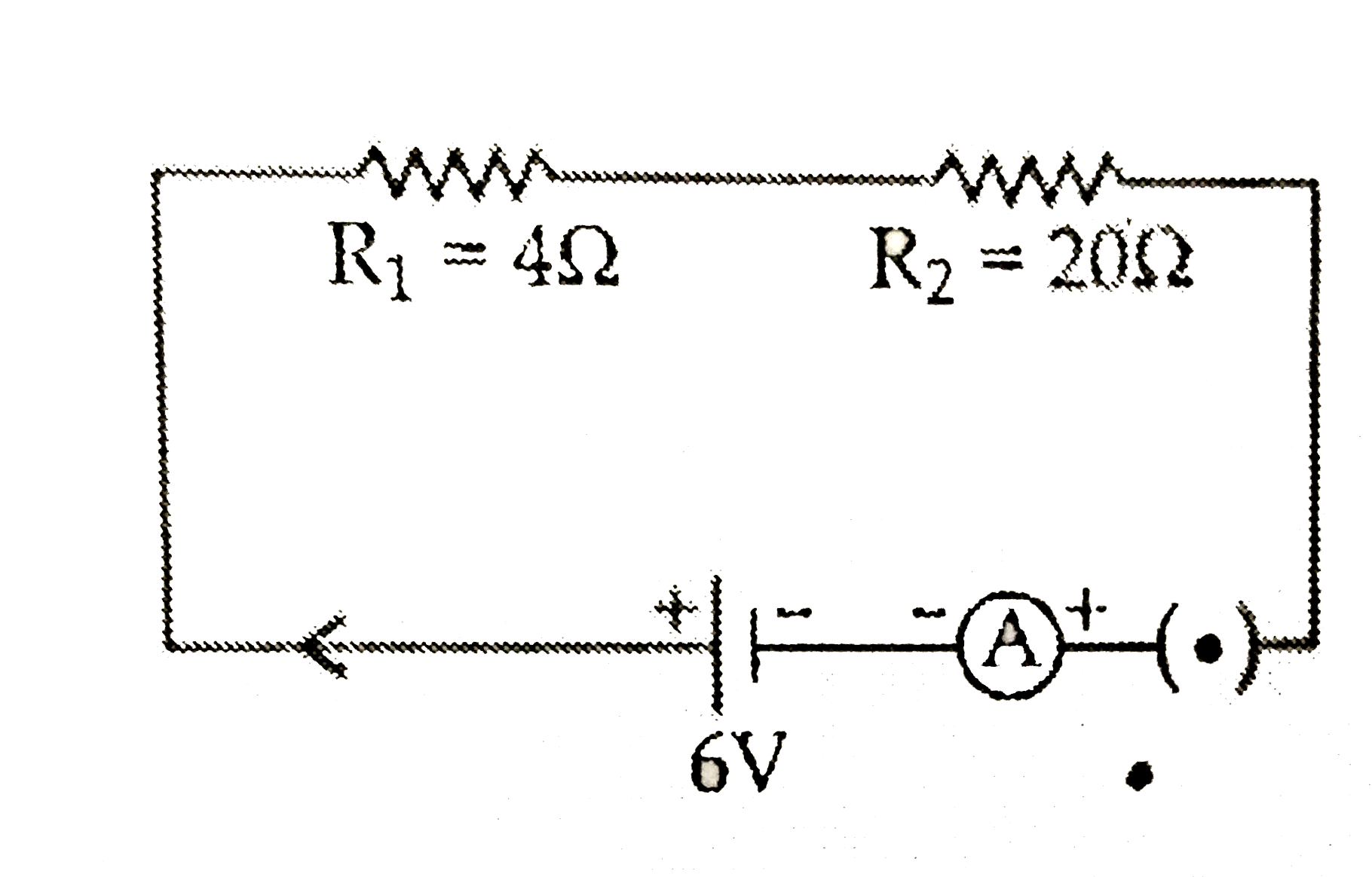Mention the condition under which charges can move in a conductor. Name the device which is used to maintain this condition in an electric circuit.
(b) A current of 2A passes through a circuit for 1 minute. IF potential difference between the terminals of the circuit is 3V, what is the work done is transferring the charge?
Electric charges can move in a conductor when a potential difference is maintained across its ends. As electric cell is used to maintain potential difference across the conductor and thus can be used for flow of charges (i.e., flow of current)
(b) Here I=2A time t=1 minute =60s and V=30V
Total charge flowing
Work done
Topper's Solved these Questions
- ELECTRICITY BOOK - U-LIKE SERIESCHAPTER - ELECTRICITY EXERCISE - LONG ANSWER QUESTION
18 Videos
- ELECTRICITY BOOK - U-LIKE SERIESCHAPTER - ELECTRICITY EXERCISE - VERY SHORT ANSWER QUESTIONS
54 Videos
- CBSE SAMPLE QUESTION PAPER 2019 - 20 (SOLVED)BOOK - U-LIKE SERIESCHAPTER - CBSE SAMPLE QUESTION PAPER 2019 - 20 (SOLVED)EXERCISE - SECTION A
10 Videos
- LIGHT - REFLECTION AND REFRACTION BOOK - U-LIKE SERIESCHAPTER - LIGHT - REFLECTION AND REFRACTION EXERCISE - LONG ANSWER QUESTIONS
14 Videos
Similar Questions
Find the potential difference between the points a and b of the circuit (figure6.28) and charge on capacitor 1.
View SolutionIf an electric heater consumes electricity at the rate of 500 W and the potential difference between the two terminals of electric circuit is 250 V, calculate the electric current and resistance through the circuit
View Solution
Knowledge Check
In the circuit shown in figure potential difference between point A and B is 16V. Find the current passing through 2Ω resistance.
 A1.5AB3.5AC1.0AD2.5A
A1.5AB3.5AC1.0AD2.5A
20 coulomb charge flows through 15 volt battery in a certain interval. Find work done (in J) by the battery?
View SolutionIf there is a current of 10 amperes in a circuit for 10 minutes, what quantity of electric charge flows in through the circuit?
View SolutionName the instrument used to measure (i) electric current in a circuit, (ii) potential difference between two points in a circuit.
View SolutionName the instrument used to measure (i) electric current in a circuit, (ii) potential difference between two points in a circuit.
View SolutionThe potential difference between the points A and B in the circuit shown is 16 V, Which is/are the correct statement(s) out of the following?

View SolutionIn the given circuit, calculate -

(a) the total resistance of the circuit,
(b) the current through the circuit, and
(c) the potential differences across R1andR2
View SolutionIn the given circuit, calculate -

(a) the total resistance of the circuit,
(b) the current through the circuit, and
(c) the potential differences across R1andR2
View Solution
